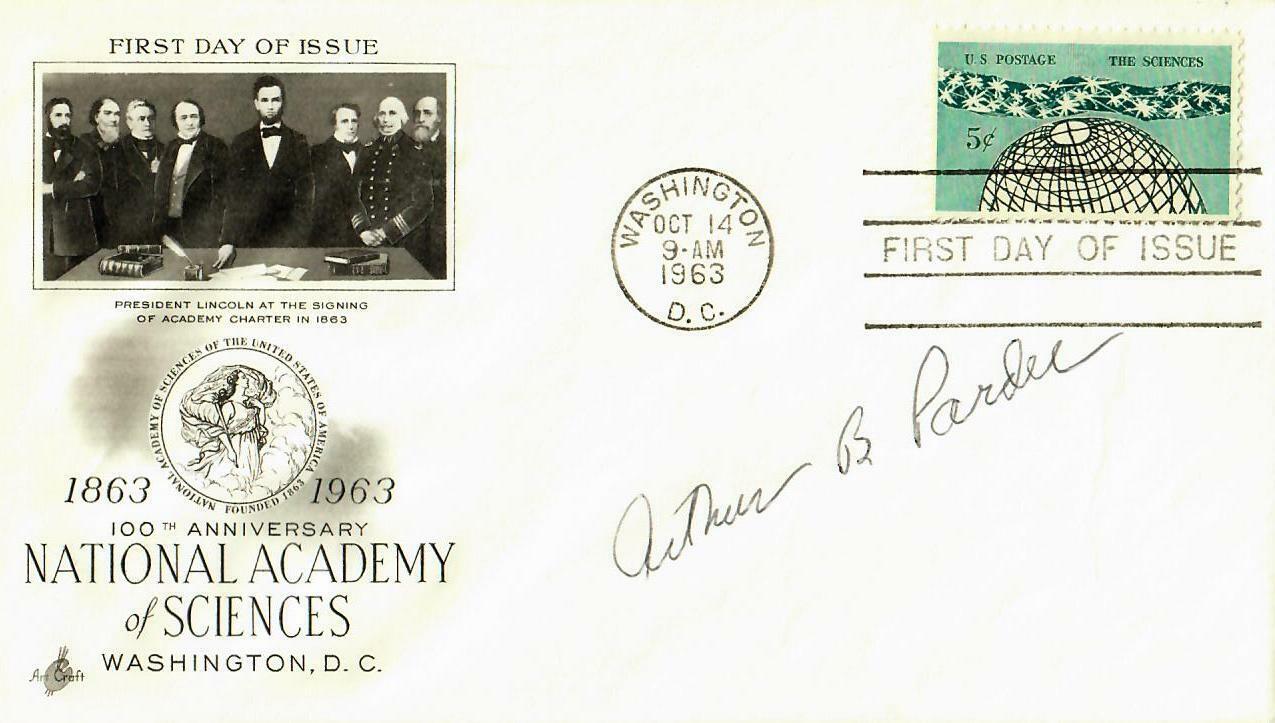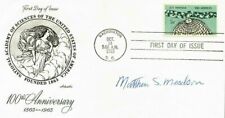"Messenger RNA" Arthur Pardee Hand Signed FDC Dated 1963 For Sale

When you click on links to various merchants on this site and make a purchase, this can result in this site earning a commission. Affiliate programs and affiliations include, but are not limited to, the eBay Partner Network.
"Messenger RNA" Arthur Pardee Hand Signed FDC Dated 1963:
$299.99
Up for sale "Messenger RNA" Arthur Pardee Hand Signed First Day Cover Dated 1963.
ES-4265E
Arthur Beck Pardee (July
13, 1921 – February 24, 2019) was an American biochemist. One biographical
portrait begins "Among the titans of
science, Arthur Pardee is especially intriguing." There is hardly a field
of molecular biology that is not affected by his work, which has advanced our
understanding through theoretical predictions followed by insightful experiments.
He is perhaps most famous for his part in the 'PaJaMo experiment' of the late
1950s, which greatly helped in the discovery of messenger RNA. He is also well known as the discoverer of
the restriction point, in
which a cell commits itself to certain cell cycle events during the G1 cycle. He did a great
deal of work on tumor growth and regulation, with a particular focus on
the role of estrogen in hormone-responsive tumors. He is also well known for the
development of various biochemical research techniques, most notably the differential display methodology,
which is used in examining the activation of genes in cells. More recently he
championed the acceptance and adoption of the conceptual review as a valuable
approach to unearthing new knowledge from the enormous stores of information in
the scientific literature. He died in February 2019 at the age of 97. Pardee
received his Bachelor of Science degree from the University of California,
Berkeley in 1942 while his Masters (1943) and PhD (1947)
degrees were earned at the California Institute of Technology under
the mentorship of Linus Pauling, who he
considered to be the greatest chemist of the 20th century. Pardee did
postdoctoral work at the University of
Wisconsin–Madison before returning to Berkeley as an instructor
in biochemistry in 1949. In the 1950s, he was on a sabbatical with Francois Jacob and Jacques Monod in Paris. In 1961 Pardee became Professor
in Biochemical Sciences at Princeton University while
in 1975 he moved to Boston to become Professor of Biological Chemistry and
Molecular Pharmacology at the Dana-Farber Cancer
Institute and Harvard Medical School as
well as Chief for the Division of Cell Growth and Regulation at the Dana-Farber
Cancer Institute. In 1981, Pardee became a founding member of the World Cultural Council. Pardee became an emeritus professor
at Dana-Farber in 1992. He became a member of the National
Academy of Sciences in 1968. While on sabbatical with Francois Jacob and Jacques Monod, Pardee was involved in an experiment that
became known as PaJaMo. The PaJaMo experiment, and later work with his
student Monica Riley showed
that protein synthesis from a gene could begin almost as soon as the gene
entered an E.coli cell. Prior hypotheses around the translation of genetic
information into proteins had focused on ribosomes, which turned over too slowly to enable the rapid
synthesis seen in PaJaMo. This led to the hypothesis that yet another RNA
species existed, messenger RNA. In the
early 1970s Pardee identified that the cell cycle has a point in the 'G1 phase' where the cell, as it were, 'commits' to moving to
the 'S phase'. Pardee published on this so-called 'restriction point', sometimes called the 'Pardee point', in
1974.

Related Items:
"Messenger RNA" Matthew Meselson Hand Signed FDC Dated 1963
$489.99
"Messenger RNA" Arthur Pardee Hand Signed FDC Dated 1963
$209.99


